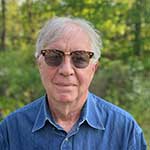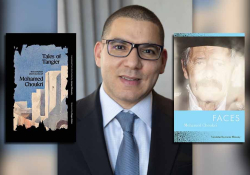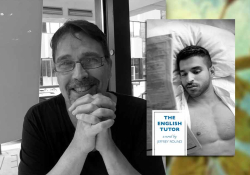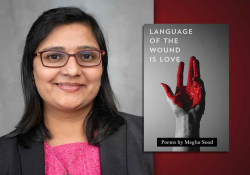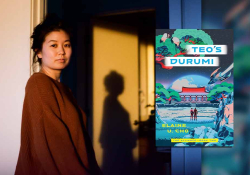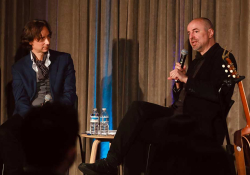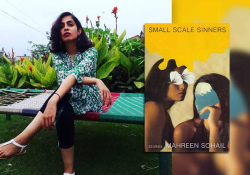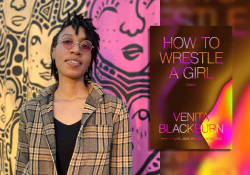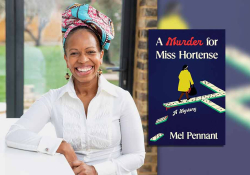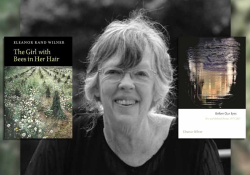On Calligraphic Perception: A Conversation with Jane Hirshfield

This interview was first conducted on October 24, 2012, at the Concord Public Library in Concord, New Hampshire, on the occasion of Hirshfield receiving the Donald Hall–Jane Kenyon Award in American Poetry; it then continued by email.
Chard deNiord: You graduated from Princeton in 1973 at the age of twenty, worked on a farm for almost a year, then began your apprenticeship at the Zen Center in San Francisco. You once said, “I don’t think poetry is based on just poetry. It is based on a thoroughly lived life. So I couldn’t just decide I was going to write no matter what. I first had to find out what it meant to live.” How do you see your apprenticeship in Zen in its connection to writing poetry?
Writing was a way to craft a self, to saturate myself more deeply in experience, to discover my own inner life and to find in it a more elastic set of responses, away from the expectations of others. I was looking to bring chaos into meaning. Putting words into music and shape, into statements that came from a less blunt and habitual world, made that feel possible.
Jane Hirshfield: Any life is overwhelming. From the time I learned to write, words offered, for me, a way to swim a flood, to swim a mountain. Writing was a way to craft a self, to saturate myself more deeply in experience, to discover my own inner life and to find in it a more elastic set of responses, away from the expectations of others. I was looking to bring chaos into meaning. Putting words into music and shape, into statements that came from a less blunt and habitual world, made that feel possible. Zen practice, when I found my way to it, was another form of that attempt and inquiry. The intentions of meditation are not, as some seem to think, the erasure of the self and its experience, but their discovery and expression at a different, more freeing level. This seems to me what poems do as well.
CdN: How did you happen to make your way to Zen? It seems an unpredictable turn.
JH: As an undergraduate in college, I read Japanese and Chinese classical literature in translation, and Buddhist ideas were woven into those works. Also, Gary Snyder came to campus and gave, along with a poetry reading, a talk about the Yamabushi mountain-climbing monks of Japan. He was the first American Zen practitioner I’d seen. He had an earring, a ponytail, a sense of the comic; he wrote poems in his own voice and of our own time. That showed me that Zen could be lived in the world I knew. That mattered. It unlocked something I hadn’t known was even a door.
After graduating and a year working on a farm, I thought I was getting into my red Dodge van—which had yellow tie-died curtains, green wall-to-wall carpet, a library, a typewriter, and a home-made built-in bed—to look for some place where I might be happy to live and work as a waitress and write. It was the early 1970s, so this seemed the obvious thing to do. But I did know there was at that time one Zen monastery in America, Tassajara Zen Mountain Center, in the wilderness inland from Big Sur. When I arrived in California, I went there, and because it was summer—a less strict time of year—I was allowed in. I stayed for a week as what’s known as a “guest student.” By week’s end, I thought, “I’ll go to the San Francisco center, stay a few months, then I’ll know all about Zen and carry on with my life.” After three months, what you know is that you know nothing. I realized I was going to be there for a while.
CdN: You remained a formal Zen practitioner for close to eight years. What happened to your relationship to poetry during that time?
JH: I had no idea, really, if I would go back to poetry, or who I might be when I’d finished the traditional thousand days of monastic training—during that time, you were supposed to do nothing outside the strict practice of Zen, and I wrote just one poem in those three years. I felt only that I was doing what I needed to do with my life, learning what I felt needed learning, and I trusted that whatever happened afterward would be right.
CdN: Can you say anything more about what you now feel that time brought you?
JH: Stepping out of any ordinary relationship to time and purpose was one central gift. In the simplicity of a monastery (and simplicity is the hallmark of any monastic tradition, not just Zen), you can begin to feel the world around you in a non-utilitarian way, and to feel what happens when your own inner lunges aren’t always the center of your life. It’s difficult and also intimate. You’re living in a way you know people have lived for ten thousand years, maybe longer. You’re running an experiment on your own views and intentions, and on what kind of person you might become, and how you might then live, if they are de-centered. In steep simplicity, you can begin to feel inside your own skin the lives of others—other people, birds, fish, the bowl in your hand, the trees, deep time, the unstable and flammable earth. Boundary becomes a more provisional thing.
From the outside, monastic life can look useless, unhelpful, extraneous, passive. It can look purely selfish, to people whose understanding of activism takes some less quiet form. Yet it isn’t at all. The same paradox appears in making art. It looks private—it is private—and yet a work of art made in personal desperation can change not just the writer but a culture, how we see and treat one another. Any true perception is activism. Randall Jarrell’s “Death of the Ball Turret Gunner”—a person is not the same, after reading that poem. War-making may continue, but you are not the same.
I wanted to learn how to move toward what’s hard, instead of away. And you know, what’s difficult isn’t only what’s obviously painful. The exposures of love, the exposures of being seen at all, the exposures of being open to seeing—these, for me, were hard.
The other thing I learned—or attempted to begin to learn—at Tassajara was some courage to stand face-to-face with whatever comes. To stay inside an experience without withdrawal, flinching, or embarrassment, and not be so quick to flee the darker parts of a life. Skittishness doesn’t serve a poet—or a person. I wanted to learn how to move toward what’s hard, instead of away. And you know, what’s difficult isn’t only what’s obviously painful. The exposures of love, the exposures of being seen at all, the exposures of being open to seeing—these, for me, were hard. Rilke’s “Every angel is terrifying” was a feeling I recognized well.
CdN: After such a long time not writing, what brought you back to poems?
JH: When I left Tassajara, I spent some time away. I was—I know this sounds unlikely—eventually driving an eighteen-wheel, double-trailered lumber truck, with a partner, to save up some money. I started writing again, and we were based in Fresno, one of the alive centers of American poetry at the time. I never met Philip Levine there, I was far too shy to go knock on anybody’s door. For a time I was in Missoula, Montana, and I didn’t knock on Richard Hugo’s door either. But I did meet one of Phil’s former Fresno State students, Roberta Spear, whose first book Phil had chosen for the first National Poetry Series contest. Roberta—who died, too young, of leukemia—looked at my poems and said, “Oh yes, there’s something, keep going.” That bit of encouragement made a difference I can’t now measure. After that, I gradually found my way back into the world of poems, even after returning to a more formal practice again in the Bay Area for a few years more. But now writing wasn’t forbidden. Philip Whalen, one of the original Beat poets, was a priest in the same Zen community, and poems are used often in traditional Buddhist teaching. In retrospect, to have stopped writing for three years was a fine part of my training in writing. A poet needs to be as friendly with silence as with words.
CdN: Tell me more about what happened when you were eight years old. It seems something awakened in you emotionally, spiritually, at a young an age, compelling you to begin to write. Did you experience an inchoate sense of an inner life, a kind of budding consciousness about the world and your place in it? The kind of childhood awakening Elizabeth Bishop describes in her poem “In the Waiting Room,” in which she realizes she’s “an I . . . an Elizabeth . . . one of them too”?
JH: I have no memory of such a gorgeously transformative moment. I’ve always assumed that the teacher who taught me to write must have said or done something. My parents did read, but not passionately, and not poetry. I’ve come to wonder if people aren’t simply constituted a certain way, just as dogs are shy or bold from birth. The first book I bought with my own allowance—that was when I was eight—was a book of Japanese haiku. I was growing up on the Lower East Side of New York City. I can’t guess what pulled me to haiku, but the choice foreshadowed a great deal of my life.
CdN: You didn’t actually start publishing until the early 1980s. Your first book, Alaya, was published in 1982. And then Of Gravity & Angels, six years later.
JH: I did publish one poem earlier, in 1973, with the dazzlingly original title “Love Poem.” I was one of the four winners of what a year later became the Discovery Award. That involved a reading at the Poetry Society of America . . . a terrifying occasion. Then I walked away from that public world for a good long spell. Alaya is pretty undeveloped work. It has the flavor of the seventies about it, and it simply doesn’t sound like me to me. When my British publisher asked if they could do a Selected Poems drawing from my first five books, I suggested we use no more than three poems from Alaya; he talked me up to six.
CdN: I can recognize the poetic seeds of your later work in your early books—an intense yet deeply composed perspicacity permeates all your work. Still, many of your poems from the 1980s use a more pastoral language than the runic language increasingly prevalent in the later books. By runic I mean inquisitive, imaginative, courageous—less governed by the formula of a clear lyrical narrative leading to epiphany than an evocative, koan-like style.
Rosanna Warren describes your mature voice well in the citation she wrote in 2004, when you received the Academy of American Poets Fellowship. She noted your work’s ethical awareness and wrote that your poems’ “language in its cleanliness and transparency poses riddles of a quietly metaphysical nature.” What do you think happened to you intellectually and spiritually between 1988 and the later books that precipitated this linguistic leap?
JH: My work has always, at least thus far, evolved over time. A person changes, the culture changes, the art form changes. Each of these things seem to be happening more quickly now than they did in the past, and I suspect that’s connected. It’s only fifty years ago that Rachel Carson wrote Silent Spring; people were still throwing empty potato chip bags and soda cans out their car windows onto the highways. When I went to college, the words “deconstruction” and “postmodern” never came up; now they’re close to passé.
Reading Celan, Lorca, Tranströmer, Brecht, Pessoa, Miłosz’s more difficult poems, and the work of the more experimental poets of the Bay Area in the 1980s and early ’90s expanded my comfort with less-spelled-out domains. Reading Scandinavian, Eastern European, and South American poets also expanded my interest in a more surreal imagination on one side and, on the other, in the kind of poem I think of as “pebbles,” poems that hold small, particular, somewhat stony chips of experience.
There’s also the simple matter of aging. Age increases uncertainty-tolerance, curiosity grows more objective and broad. As Novalis said, a person spends the first half of a life looking inward, the second half looking outward. My later poems are still subjective—any good poem requires the poet have something at stake in it and is, in some way, whether large or small, a matter of life and death. But what is subjective expands into what was once objective, perhaps. Stones, philosophical concepts, history, data and descriptions drawn from science—when these begin to feel personal, poetry becomes possible. I do hope that doesn’t sound exactly the opposite of how I mean it.
CdN: Just as it took you eight years to complete your formal studies in Zen, it took you another significant period of time—twelve years—between the publication of what you call your “apprentice volume” in 1982 and the publication of The October Palace in 1994, the book I’d say marks a clear aesthetic break from your early, more accessible poems to the more runic, leaping style barely hinted at in the interim Of Gravity & Angels (1988). It feels to me something more than simply a matter of aging or widened reading. Your work is marked by a sense of patience and invitation, of doors left standing open, but was there also some precipitating event that caused this sudden change?
JH: I don’t think anyone’s account of her own development can be wholly trusted. But yes, there was a distinct moment of stock-taking and realization. When Of Gravity & Angels was coming out from Wesleyan University Press, two things happened. First, the editors asked for a four-line excerpt for the catalog. You’d think that would be simple, but my poems worked on the level of the whole poem, and weren’t making excerptable, memorable statements. The quick brushstroke of singular perception was missing. Think of Wisława Szymborska’s “the happiness of skating on thin ice”—what a magnificent, original, calligraphic perception! I knew my poems weren’t doing that and felt it a lack—both of art and also, somehow, of courage.
The other, related realization I felt as I looked at the book as a whole was—I almost don’t know how to put this—that the poems were perhaps too lyrical. You said just now “pastoral.” That quality isn’t just a matter of rural imagery—my imagery continues to draw mostly on the natural world—it’s a matter of not applying sufficient pressure of feeling and mind. Again, I felt this a problem of courage. I wanted more oddity, more surprise. There are some very unusual imaginative occurrences in that early work, yet they felt somehow smoothed. And so I asked the muse to open the gates of the strange, to do things in my poems that might trouble, might frighten.
One other thing must have contributed to leaving things in a poem more open and unbridged—translating the two great women poets from classical-age Japan, Ono no Komachi and Izumi Shikibu, for The Ink Dark Moon. I was bringing into English a kind of poetry in which statement lies next to statement, image lies next to image, without necessarily filling in the connections between them. I’ve never wanted to directly imitate Japanese poetic forms; I wanted my own, hybrid voice, my own seeing and speaking. But still, practicing new scales in translating changes the ear, the eyes, the hands, of one’s own work as well.
CdN: One of my favorite poems in The October Palace is “Inspiration,” which begins:
Think of those Chinese monks’ tales:
years of struggling
in the zendo, then the clink,
while sweeping up, of stone on stone . . .
It’s Emily’s wisdom: Truth in Circuit lies.
This seems to me a voice making a dramatic turn away from the coherent, lyrical, often metaphorical narratives that dominate your first two books—such poems as “Heat,” “Ripeness,” “October 20th, 1983,” “Completing the Weave”—to bold leaps that intone the rigors and mysteries of enlightenment. It sounds from what you just said as if you shifted, somewhat deliberately, in the early 1990s, from mining familiar circumstances and subjects to writing more by faith about the strange and even weird, wrecking yourself “solitary here,” as Emily Dickinson described her state of unknowing in her poem “I felt a Funeral in my Brain.”
JH: Might I say first that I do feel that some things in my work are continuous? “October 20th, 1983,” was about the now forgotten invasion of Grenada, and Of Gravity & Angels has many poems that emerged from what Rosanna Warren named ethical awareness. “Justice Without Passion,” was written out of bewilderment over the Robert Bork Supreme Court nomination hearings. That poem emerged from noticing a pun—the two possible meanings of “evenhanded.” The emerged awareness caused me to think harder about what “evenhanded” justice might mean, about how the metaphor of a blindfolded woman holding scales plays out in our shared social discourse—and I concluded that while sometimes a blindfold is needed, sometimes it is blinding. “The Women of Poland” envisions the food ration lines of Poland then in the news; I wrote it long before discovering how important the Polish poets (some of whom must have stood in those lines) would become for me. Questions of justice, violence, and fate are in every book . . . the first Gulf War, Indira Gandhi’s assassination, the genocide in Rwanda, the Velvet Revolutions, September 11th. Come, Thief is haunted by the Iraq and Afghanistan wars, and by Abu Ghraib. They knock at the poems in sometimes visible, sometimes hidden ways.
But to go back to your question, it’s rare for me to take such a conscious hand to what I do; mostly, I’m not able to write poems on willpower or by conscious decision. But yes, I threw a request to the muse, and my work since then has been in some way a continuation of that request for a poetry more permeable to strangeness. In writing, in revising, some part of me now holds the questions, “What else? What different? What more?” I’ve long loved Czesław Miłosz’s statement at the start of his “Ars Poetica?” that he has “always hungered for a more spacious form,” for a more spacious poem. The marvelous question mark in the title matters. Throughout his life, Miłosz questioned, experimented, surprised. One small favorite of mine is a late poem in which he describes himself as waking in the middle of the night and repeating to himself, “strange, strange, o how strange, how / strange. O how funny and strange.”
CdN: Would you say Miłosz’s spaciousness-hunger has played out in some way in your own work?
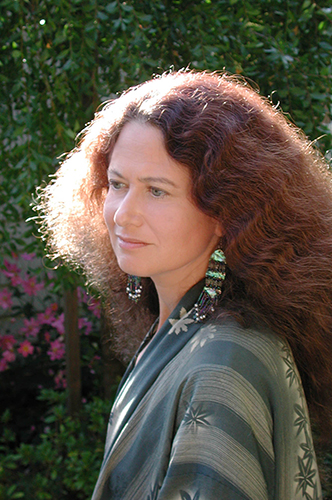
JH: Spaciousness can take many directions. To ask of each poem what it hasn’t done yet, hasn’t found yet, is a press for increase. Indeterminacy’s openness and authority’s clarities are each expansions beyond lyric’s baseline ways of speaking, and each in different ways can feel, for me, both invitation and risk. Some of the poems people respond to most strongly are poems I’ve almost thrown away, whether because I thought they were too peculiar or because I feared they were sentimental. I knew, for instance, when I wrote The Lives of the Heart that some number of readers would bristle at that word. But I needed to look at the heart, my own and others’, and in those years—the mid-1990s—I may not have been alone in finding the inner life and the life of feeling neglected, suppressed. A recent poem seems relevant here, and ends with a line that seems to have struck some chord in others: “Think assailable thoughts, or be lonely.”
CdN: And what about the “form” in Miłosz’s statement?
JH: Well, more of my work uses what I think of as “wandering rhyme” than people seem to realize, and over time I’ve worked also in ways I think of as less, perhaps, “forms” than “modes.” An ode, for instance, is a mode—a mood that evokes a certain kind of approach and voice—more than it is a form in the stricter sense that a sonnet is. The modes in my work are often self-created—the short pebble-poems, the longer associative-meditative assays, are ways of writing I first stumbled into, then began to feel consciously as offering shapes and tones in which certain things could happen, and came to explore more. In the most recent book, Come, Thief, there’s one haibun, a few prose poems, a villanelle, a poem I think of as loosely a ballad. At the heart of the idea of form, I find, is this—what you are able to think will vary with the tone and music of your thinking. Similarly, what you care about will shape what you see and say. Somewhere between those two things, each poem’s voice begins.
CdN: Your most recent two books, Come, Thief and After, include a number of the verse and prose poems subtitled “assays.” These poems undertake intriguing, oblique, and often figurative analyses of wildly varied subjects, both abstract and material: shadows, termites, gravel, possibility, the words “to,” “ah,” “and,” and “once,” envy, hesitation, the rock garden of Ryoanji, tears, translucence, Edgar Allan Poe, articulation, hope, and judgment. Could you talk a little about your yen for both precise, even empirical investigation of a subject and your perception of the simplest things as runes that contain liberating secrets? The puzzling language in these poems seems much more influenced by ancient sacred texts from the East than nondeterminate postmodern language from the West. I’m still puzzling over these lines from “‘To’: An Assay”: “Being means and not end, you are mostly modest, / obedient as railroad track to what comes or does not.”
JH: I made my way into the assays over some years. Earlier poems worked near that voice and that set of strategies, but “assay” didn’t become for me a fully conscious, distinctive mode until I wrote the poem about Poe. I’d written about him a year earlier in a regular essay, and when the poem arrived, the beast was so shaggy, so near prose in its rhythms and procedures, that I thought the reader might need some help catching onto the way I myself heard it speaking. Looking for a facilitating title, I stumbled into the idea—“Poe: An Assay.” The word was in my mind not so much from any literary use as from the scientific journals that came to the house—I lived at that time with a scientist. On the back of the journals were ads for half-million dollar “assaying” machines. I knew the word is a cognate of “essay,” from the French assayer, to try, and the association with prose-thought was present in choosing that way of qualifying the poem about Poe, but the assayings of molecular chemistry were what I mainly intended.
I’d thought it a one-time subtitle, but then other poems began to arrive in the same mode. Breaking some contemplated subject into its component parts and associations, some outer, some inner; using the sense of imaginative molecular labeling—these approaches felt a useable tool for breaking ideas and objects open, and for breaking myself open in new ways as well.
For me this mode is quite the opposite of anything Eastern, sacred, or vatic. I can guess what may have led you to see that—something about the long sentences and the willingness to be authoritative. But, no.
The imagination of the assays is centrifugal, pulling against the literal or objectively physical in these poems, but also centripetal: the center of gravity is always the thing itself. The poem tests the strength of orbit and object and sees what it finds. The assay on gravel found the question of part and whole, then found death. The assay on “to” found precipitous time, then death. The assay on “tears” found misunderstanding. The assay on hesitation found the earliest moments of love. The assay on judgment found, well, judgment, and my own extraordinarily mixed relationship to its place in our lives.
The assays have opened subjects I probably wouldn’t have found my way into by any other voice. Prose poems function the same way—and as you’ve noted, some of the assays are also prose poems. Others are also odes. For me, it’s a supple and compounding invention. As for those lines you asked about, which come from the assay about the preposition “to”. . . well, “to” has to go where it’s pointed, does it not? It is never destination. That assay is full of the word itself, used many different ways. It began playfully, starting with an image straight out of Sunday-morning children’s cartoons, and has quite a few pun-switching gestures. That it ended up being about death was a surprise. But death is the place each railroad track of existence eventually leads to.
CdN: In the four books of poetry following The October Palace (The Lives of the Heart in 1997, Given Sugar, Given Salt in 2001, After in 2006, and Come, Thief in 2011), you continue to explore in your own poems, I believe, what you’ve referred to in Nine Gates as the liminal—the “threshold state of ambiguity, openness and indeterminacy” by which a writer crosses the boundary of the separate self into broader identification with others. Are you finding it easier or more difficult, here, now, to conjure new poems in this threshold state?
I never take for granted that I’ll be able to write. There’s no acorn stash of ideas in my desk drawer. There’s only the wanting to know my life through writing, a wish felt sometimes as desire, sometimes as desperation. What reservoir the words come from remains a mystery to me.
JH: What a good question. For me, finding a new poem is always unknowable and difficult. At times, a poem might begin to say itself in me. Other times, I feel like a fly fisherman going out to a river in hope that something will be there. I never take for granted that I’ll be able to write. There’s no acorn stash of ideas in my desk drawer. There’s only the wanting to know my life through writing, a wish felt sometimes as desire, sometimes as desperation. What reservoir the words come from remains a mystery to me. And over the course of my life, there’ve been many pauses. The times of stopping seem to allow old habits of being or thinking or saying to fall away. When I start again, something is different.
CdN: You’ve complemented your books of poetry with several anthologies, translations, and a collection of essays, Nine Gates: Entering the Mind of Poetry, in 1997. That came out the same year as The Lives of the Heart, and your anthology Women in Praise of the Sacred: 43 Centuries of Spiritual Poetry by Women was published in 1994, the same year as The October Palace.
JH: Yes. I’ve rather liked having twins. It’s very efficient. And entirely surprising to me, since I don’t think of myself as efficient, or as prolific. Yet this keeps happening. I’m just now trying to figure out whether the next book of essays and next book of poems may or may not coincide. It’s looking pretty likely.
CdN: Then there’s also your e-book on Basho, The Heart of the Haiku, which appeared in 2011, a few months before Come, Thief, and there’s The Ink Dark Moon, Poems by Ono No Komachi and Izumu Shikibu, Women of the Ancient Court of Japan, which came out in cloth in 1988, alongside Of Gravity & Angels, and then in an expanded paperback edition in 1990. You started your research for The Ink Dark Moon while you were still at Princeton, correct?
JH: Yes, I learned of these poets’ existence at a seminar table in East Asian Studies. But there were only six or so of their poems in English, along with the Noh plays about Komachi. I waited fifteen years for some scholar to translate more. When that didn’t happen, and I was given a Guggenheim fellowship for my own work in 1985–86 and coincidentally introduced to Mariko Aratani, who became my co-translator, I ended up working on two books that year instead of one.
The anthologies and translations I’ve done have always been more accidental than planned. The Ink Dark Moon was the first accident. Once I’d done that book, though, and found it so welcomed by readers and scholars, a door opened, and I’ve kept walking, each time unexpectedly, through it.
CdN: This reminds me of the conclusion of your poem “Inspiration”: “‘Enlightenment,’ wrote one master, / ‘is an accident, though certain accidents make you accident prone.’”
JH: Just so.
CdN: Do you think that working so closely as you have with the work of other poets has expanded your own poetry writing?
JH: Yes and no. Some part of me shies away from working in others’ fingerprints. After a life immersed in Japanese literature, I’ve written one haiku, one haibun, and a single tanka that doesn’t even appear in a book of my own, though rather astonishingly, it is circulating on the Internet, after having appeared in a long-ago anthology. My desire has been to learn from others but, when I write, to make something simply my own. There are ways to allude and include. Early Sanskrit erotic poetry, for instance, is an extraordinary body of work, in many ways reminiscent of the poems of the Japanese court women. One recent poem, “Cellophane: An Assay,” ends with a quoted image from that source.
CdN: You say something very interesting on the subject of sounding like others in the chapter on originality in Nine Gates, in a passage speaking of traditional Japanese poetics: “Individuality of feeling mattered immensely, but individuality of expression would have been found bizarre by these writers. Over the thousand years between the late eighth century’s Manyōshū anthology and the appearance of Basho, poetic diction and strategies changed little, yet the poems themselves changed deeply. There are problems inherent in such a conservative aesthetic—problems of staleness and repetitive feeling, of an almost mechanical juggling of familiar imagery—though any set of artistic values can produce bad writing.” You go on to say, “Good poems leap over the pitfalls.”
JH: Yes, in that way it’s like the English sonnet—think of how many terrible sonnets have been written—
CdN: Yes.
JH: And then, Keats comes along and . . .
CdN: Transforms it.
JH: And all that reification just falls apart, without abandoning the form. And then Marilyn Hacker comes and does it again. So yes, of course it can be done. Richard Wright’s thousands of haiku are superb haiku, and also superb poems of our own time and world. But for me, there’s just some sense of taboo about writing in Japanese forms. It may be that I’m too susceptible to the pulls of what I love—the way a magnet will get pulled into another if it gets too close.
CdN: That’s fascinating. When I interviewed Ruth Stone I asked her what contemporary poets she read, and she responded, “I don’t read them.” And I said, “Why not?” And she said, “Because I’m afraid they would influence me so strongly that I wouldn’t be able to write my own poetry.”
JH: I can understand that. I, though, take the opposite strategy, in reading. I read as many other poets as I can, current and past, in English, in translation. That’s the other way to avoid possible over-influence—reading widely.
CdN: Opening broadly is clearly important to you. Your poem “The Envoy,” which Robert Bly has described as “one of the greatest poems of the past fifty years”—no small praise, although such high praise has been known to enervate the muse—captures what you’ve called “the threshold state” so economically and simply, while also emanating a wise, spiritually venturous expression. Could you talk about it a little? Here’s the poem:
The Envoy
One day in that room, a small rat.
Two days later, a snake.
Who, seeing me enter,
whipped the long stripe of his
body under the bed,
then curled like a docile house-pet.
I don’t know how either came or left.
Later, the flashlight found nothing.
For a year I watched
as something—terror? happiness? grief?—
entered and then left my body.
Not knowing how it came in,
Not knowing how it went out.
It hung where words could not reach it.
It slept where light could not go.
Its scent was neither snake nor rat,
neither sensualist nor ascetic.
There are openings in our lives
of which we know nothing.
Through them
the belled herds travel at will,
long-legged and thirsty, covered with foreign dust.
One day in that room, a small rat.
Two days later, a snake.
Who, seeing me enter,
whipped the long stripe of his
body under the bed,
then curled like a docile house-pet.
I don’t know how either came or left.
Later, the flashlight found nothing.
For a year I watched
as something—terror? happiness? grief?—
entered and then left my body.
Not knowing how it came in,
Not knowing how it went out.
It hung where words could not reach it.
It slept where light could not go.
Its scent was neither snake nor rat,neither sensualist nor ascetic.
There are openings in our lives
of which we know nothing.
Through them
the belled herds travel at will,
long-legged and thirsty, covered with foreign dust.
JH: One task life demands of each of us is to come to some relationship with not-knowing. Childhood’s chorus is “Why?” “Why?” “But why?” It’s a useful question. But adulthood is, in part, acknowledging that there are many times it can’t be answered. This is part of what Keats had in mind in his now-famous description of “Negative Capability.” The Greek gods, too, are an invention of the inscrutable.
At the center of this particular poem lies the inscrutability of the emotional life, of how it lives in us and we in and with it. It arrives. It stays. It vanishes. An earlier poem, “The Gods Are Not Large,” is somehow related. We might construct some story, but we can never understand fully what has happened to us in our lives. The most powerful shakings of the psyche, joyous or ruinous, are felt as a matter for awe, in the old sense of that word. We’re unmade by them. Again, there’s Rilke: “Every angel is terrifying.”
I hope it doesn’t diminish the poem if I say that rat, snake, and room actually existed. My poems often begin with the factual—the seen, the heard, the tasted. The psyche chooses, from the stream of any day, what might magnetize some deeper understanding. This poem, then, started with a concrete, literal experience but then moved into the inner experience the outer one summoned. Something difficult was going on in my life, and the poem was written amidst that, but it also looks at what for me is a continuous puzzle: why does it feel so essentially necessary and yet so ambivalently wanted, to have the fixed shapes of my life unfixed?
CdN: Are there any other things you might say about this poem?
JH: Well, snakes and rats, even actual ones, have their train of what a Jungian might call royal meanings. Both awaken a jolt of fear, but there’s more than that. In the West, a snake is a revelation of the ungloved and unhidden phallic; it is dangerous, poisonous in both the actual and biblical garden, and frightening. In Asian cultures, though, the snake is a wisdom creature, bringing the under-earth’s hidden truths and tunnels. Rats are everywhere resourceful and tricksterish and also pariah-survivors we pull back from. I’ve developed some affection for rats in my poems—though not in my house.
“The Envoy” didn’t answer my unanswerable circumstance. The poem doesn’t choose between terror, happiness, or grief. Such labels can’t catch the actual reality of what we feel when some huge change comes through a life and undoes it, leaves it to be somehow remade again.
Just yesterday, someone brought me a copy of Given Sugar, Given Salt to sign. In the German still-life on the cover, there are many edible things, a beautiful small parrot, an insect. There’s also a little rat or mouse eating one of the sixteenth-century sweets on the table. The man told me his wife couldn’t believe he’d bought the book—he is wildly rat phobic. But aren’t our phobias what we need poems to work through and with? The terrors woven into the fabric of our lives require poems—not to answer them, but to meet them. And doing just that underpins “The Envoy.” Writing it didn’t answer my unanswerable circumstance. The poem doesn’t choose between terror, happiness, or grief. Such labels can’t catch the actual reality of what we feel when some huge change comes through a life and undoes it, leaves it to be somehow remade again. We don’t know if the snake ate the rat or if both escaped or if both are still there. But an image lets you begin to take something in, to absorb it without either dissection or encysting. In the end, all I could do in “The Envoy” was allow its images to speak through me, to say that my life felt to me like belled herds unseen in the night; that events come incomprehensibly, from elsewhere, thirsty and dusty; that the sound of our lives wakes us and we listen and become that listening, become the herds.
CdN: Your poems not infrequently use animals—animals presumably real, and seen in the world—to explore both the animals themselves and other subjects. “Sheep,” from Come, Thief, is one poem in which you address the mystery of animal encounter.
Sheep
It is the work of feeling
to undo expectation.
A black-faced sheep
looks back at you as you pass
and your heart is startled
as if by the shadow
of someone once loved.
Neither comforted by this
nor made lonely.
Only remembering
that a self in exile is still a self,
as a bell unstruck for years is still a bell.
Would you mind talking about this encounter, particularly in regard to how the animal’s gaze redounds on human consciousness?
JH: Yes, of course. For me, there is something powerful in any gaze shared across species, and sheep’s eyes and faces are especially alien, as goats’ eyes and faces are alien. We have sheep in children’s stories, and give children stuffed-animal lambs, but in that moment of actual looking between living creatures, the difference between us steps forward. The sheep is nervous, wondering what are you going to do—walk by, feed it, eat it? We are not part of their children’s stories, and the look is not neutral, it’s full of intensity, immediacy, and feeling. For the sheep that gaze is a matter of life and death. Sheep are prey.
A new emotion always signals some change in the status quo. And this, as I’ve been saying, is something I want. To be shaken, undone, disrupted. Or some part of me, the braver part, wants that. We are most alive in the moment the ladder is tipping.
And so, the looking of those black-faced sheep—I saw them while crossing northern Scotland, on the way to read on the Isle of Skye—felt significant, something more than itself. It’s Emily Dickinson’s “Haunted House,” isn’t it, the way certain moments begin to feel inhabited by something more freighted? Later, writing the poem, I began also to think about feeling itself. I’d been learning some of the neuroscience of emotion for an essay about poetry and surprise. “It is the work of feeling to undo expectation” is a neurochemically accurate statement—a new emotion always signals some change in the status quo. And this, as I’ve been saying, is something I want. To be shaken, undone, disrupted. Or some part of me, the braver part, wants that. We are most alive in the moment the ladder is tipping.
A poem is in many ways just that—a tipping and catching: “X happened, and I felt A, then I felt Q.” That “Q” is the undoing and remaking of ordinary expectation. If you simply felt “B,” you wouldn’t need a poem. I’ve come to feel the emotions are, as Gary Snyder once defined poetry, “very high quality information.” They’re as deeply a part of our capacity to navigate the world as the more cognitive intellect is. “I’m frightened”; “I want”; “I’m worried”—these sensations are information that allows us to respond to some this-moment circumstance. To return to the poem and your question, animals’ intelligence is seated in their emotional lives. Sheep are quite brilliant at being sheep, but what they know, they know by desire, fear, curiosity, hunger, courtship.
CdN: Could you say something more about the poem’s ending? You don’t sweep up all the dust at the end of this poem, or in your poems in general.
JH: Thank you. Yes, I’d like not to slam the door on mystery at a poem’s finish. Mystery is what you are trying to let in, if you enter the realm of poems at all. Think of Dickinson’s complaint: “They shut me up in prose.”
Are you curious about the ending’s exiled self, or its bell? I’ll choose the bell, which for me is somehow an image of a life’s resonant possibilities, or perhaps of a fate. A fate is sometimes lived out fully, sometimes not. Many things that are possible for a person don’t ever happen—yet missed loves, as in this poem’s earlier image, are not just something that vanishes. Untaken choices, I think, remain part of your life, just as a bell is a bell whether or not it is ringing. Your life is your longings as much as any set of its events.
There are quandaries that come up for a person, things you continue wrestling with for years. Fate and its accidents is one such quandary, for me. Another is how we enter and engage with our most powerful feelings, especially the ones we’d prefer not to have.
Let me add, mostly I try to forget whatever I may know about my own obsessions, about my poems. I suspect it unhealthy for a poet to know very much about what or why he or she writes—you might then stay in only that one small paddock. And yet, you’re forced at times to notice. An interviewer asking questions is one way that happens. So I’ll repeat, having already long fallen down that rabbit hole in this conversation, that another thing my poems have been haunted by is the hunt for permeability, for finding a way to say yes to what I’d rather say no to, for allowing the difficult thing to come in.
CdN: Can you think of a poem of yours that captures this quality of “allowing difficult things in”?
JH: “The Weighing” is the one I’d usually offer, but a newer poem comes to mind, “My Weather.”
My Weather
Wakeful, sleepy, hungry, anxious,
restless, stunned, relieved.
Does a tree also feel them?
A mountain?
A cup holds
sugar, flour, three large rabbit-breaths of air.
I hold these.
I hope this poem’s heard as a little comic. Seeing the air in a measuring cup as a volume of rabbit-breaths; anxiety equated with sugar, relief with flour; wondering what the inner life is of trees and mountains. . . . I think it’s funny, anyhow.
Every existing person or thing will carry exactly what they’re given to bear. Sometimes it’s terror, sometimes it’s flour. Whatever it is, you have to let it in. The top of the measuring cup is lidless.
Yet it’s also about something serious—all these emotions do pass through us, and what are we to do about it? Take anxiety. For me, anxiety is almost intolerable. Yet it is also information. Anxiety tells you not just that something is wrong, but that there’s something you haven’t done and need to; the higher the amplitude of anxiety, the more desperate you are to do something to end it. Sometimes you can’t, sometimes there’s nothing to do. What then? Well, you wait—it’s unlikely, though not impossible, that on your deathbed, this very anxiety will still be what’s with you. In the meanwhile, though, it helps to realize that you, your emotions, your whole excruciating inner landscape, are just that—landscape, one of the shapes of existence. And perhaps some freedom can be gained by the recognition of that universality, some proportionate return to humor. Are trees anxious? Well, no, I don’t think they are. Yet they must have their own forms of suffering. Every existing person or thing will carry exactly what they’re given to bear. Sometimes it’s terror, sometimes it’s flour. Whatever it is, you have to let it in. The top of the measuring cup is lidless.
CdN: You’ve sometimes quoted a poem by Izumi Shikibu that seems related to this:
Although the wind
blows terribly here,
the moonlight
also leaks between the roof planks
of this ruined house.
JH: It took a very long time to translate that poem, when I was working with Mariko Aratani on it for The Ink Dark Moon. In Japanese, some of the words have multiple possible meanings; I knew something was in it, but I couldn’t tell what. When I finally did understand—if you wall your house up so tightly that no wind can get in, no moonlight will get in either—that changed my relationship to my life, and to pain. It changed my poems. It changed everything. And this is what I want from a great poem, to be left a different human being, with a different capacity and a different comprehension.
CdN: You’ve been thinking about permeability for a long time, both in your poems and in your essays. A great deal of the final chapter of Nine Gates, “Writing and the Threshold Life,” is about the necessity for a permeable boundary in great art.
JH: Increase of openness, increase of freedom, fearlessness, suppleness, a trustworthy sense of justice . . . all these things are somehow related also to empathy, permeability, and compassion. And poetry is built, I think, on the many devices of compassion. We wouldn’t understand any image in any poem if it weren’t felt as if from within our own skin.
CdN: Nine Gates advocates the importance of emptiness as a vessel for compassion. Emptiness as a Buddhist understanding is quite similar, again, to Keats’s notion of negative capability, in which the poet empties herself of her own personality and ego in order to identify with others. You start the chapter on thresholds with a long excerpt from a Noh play about a more subtle understanding of self and other, of sacred and secular, and quote Pablo Neruda’s “Poetry,” in which he says, “Poetry arrived / in search of me. I don’t know. I don’t know where / it came from, from winter or a river . . . / abruptly from others, / among violent fires / or returning alone, / there I was without a face / and it touched me.” How similar that unknowing also seems to the Buddhist koan, “Show me your face before your parents were born.” You write later in that chapter about Walt Whitman as a figure of “threshold” and transpersonal self—that is, the self that crosses over from speaker to other. Is it necessary to distinguish between Buddhist tenets and the language of poetry?
JH: It’s ironic for me that so much of this conversation has been about Buddhism, when my own definition of Zen is that Zen is nothing more than the taste of your own tongue in your own mouth. I’d much prefer my poetry not wear a spiritual label. Ideas and images and concepts found in Zen are found in Neruda, in Whitman, in Wordsworth, in Horace, in Shakespeare, in Mesoamerican Nahuatl flower-songs. . . . The recognition of transience, suffering, and connection are basic human experiences.
Zen is simply what happens if you don’t hold other ideas in your mind and keep open eyes. That’s what I want poems to do as well. To press on the edge of what’s possible to say, on the edge of what’s possible to know. You don’t need a poem to hold obvious, easy information. If you want to learn how to bake a cake, there might be some marvelous poem of cake baking, but you’ll probably reach for a cookbook. What poems are needed for are experiences that face in more than one direction at once, that can’t be held in any other vessel except the language of poetry.
CdN: Very nicely put. I just want to read this passage by Lewis Hyde, from his Trickster Makes This World, since we’ve been talking a lot about the notion of the trickster. Hyde makes the point that the trickster is an amoral—not immoral, but amoral—figure “who is at one and the same time creator and destroyer, giver and negator. One who dupes others and is always duped himself. He knows neither good nor evil, yet he is responsible for both. He possesses no values, not moral or social, yet through his actions, all values come into being.”
JH: Yes, yes, that’s a marvelous account of Trickster’s inhabitance of the threshold. Lew’s book is a treasure—Trickster really is one fundamental aspect of how the world of mind and culture works, and Trickster’s domain is in so much we’ve been discussing. Hermes, it’s worth remembering, is the god who faces both directions when placed at a crossroad. Trickster’s language is disruptive and mercurial in the same way. Wordplay is Trickster, the slyness of rhetoric is Trickster, jokes, irony, the doubled readings that come out of poetic music and line breaks. In every literate culture that has writing, Trickster invents it, then uses it to foment revolutions of mind ever after. Whatever the current order or current understanding of things is, Trickster says, “Let’s try it another way.”
CdN: That’s wonderful. As we’re close to closing, I wonder if you’d say a few words about the title of your latest book, Come, Thief.
JH: I had in mind many things, but especially an old Chinese teaching story. An aged hermit returns at night from gathering wild greens for his supper, comes back to his small hut that had almost nothing in it, and discovers he’s been robbed. But the thief didn’t take the cast-iron cauldron—it was too heavy. The hermit picks up the pot and goes running down the road, yelling, “Wait, wait, you forgot this!” I want to invite that thief also into my life, the one who takes everything. The thief is love, is loss, is time, is aging, is whatever comes in, whether you think you want it or not, and leaves everything changed. The hermit story is the trickster response, the art, which lets you accept that.
CdN: And one last question: In thinking about the range and the scope of your work, I’m wondering if when you look back on your early work, even as far as Alaya and Of Gravity & Angels, do you, as Frost wrote in his poem “Into My Own,” find that you “have grown more sure of all you thought was true,” or less sure, but more comfortable, with what you don’t know you don’t know?
JH: Very much the second—less sure. But more glad of unsureness.
Editorial note: Hirshfield’s essay “What Is American in Modern American Poetry? A Primer with Poems” appeared in the September 2011 issue of WLT, “Poetry Untethered.” Her poem “My Weather” appeared in Poetry’s September 2012 issue; “Cellophane: An Assay” is forthcoming in American Poetry Review’s November/December 2013 issue.
